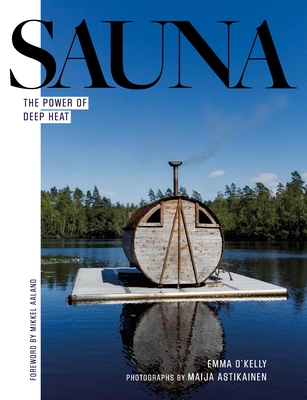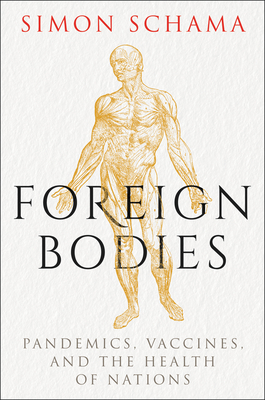
How to Be a Renaissance Woman: The Untold History of Beauty & Female Creativity
Description
An alternative history of the Renaissance—as seen through the emerging literature of beauty tips—focusing on the actresses, authors, and courtesans who rebelled against the misogyny of their era.
Beauty, make-up, art, power: How to Be a Renaissance Woman presents an alternative history of this fascinating period as told by the women behind the paintings, providing a window into their often overlooked or silenced lives.
Can the pressures women feel to look good be traced back to the sixteenth century?
As the Renaissance visual world became populated by female nudes from the likes of Michelangelo and Titian, a vibrant literary scene of beauty tips emerged, fueling debates about cosmetics and adornment. Telling the stories of courtesans, artists, actresses, and writers rebelling against the strictures of their time, when burgeoning colonialism gave rise to increasingly sinister evaluations of bodies and skin color, this book puts beauty culture into the frame.
How to Be a Renaissance Woman will take readers from bustling Italian market squares, the places where the poorest women and immigrant communities influenced cosmetic products and practices, to the highest echelons of Renaissance society, where beauty could be a powerful weapon in securing strategic marriages and family alliances. It will investigate how skin-whitening practices shifted in step with the emerging sub-Saharan African slave trade, how fads for fattening and thinning diets came and went, and how hairstyles and fashion could be a tool for dissent and rebellion—then as now.
This surprising and illuminating narrative will make you question your ideas about your own body, and ask: Why are women often so critical of their appearance? What do we stand to lose, but also to gain, from beauty culture? What is the relationship between looks and power?
Praise for How to Be a Renaissance Woman: The Untold History of Beauty & Female Creativity
“How to Be a Renaissance Woman brings us a breezy and readable portrait of 16th-century Italy through the lens of beauty standards and practices. There are plenty of noblewomen in these pages, but Burke makes an effort to talk about women of many kinds: domestic help, peasants, widows, courtesans and all manner of sex workers. The details are fascinating.”
— The New York Times Book Review
“A delightful look back at how the Renaissance changed beauty standards. Jill Burke’s How to Be a Renaissance Woman is full of surprising information about how the era widened self-expression.”
— Becca Rothfeld, The Washington Post
“Jill Burke's sprightly cultural history is a window on the lot of women in early modern Europe. Also, a gentle reminder that, as complicated as things are for women of the TikTok generation, it's nothing like the fraught terrain confronting the Renaissance woman.”
— The Star Tribune
“In How to be a Renaissance Woman, a lively new history of beauty culture in 16th- and 17th-century Italy, make-up is a tool to understand society and the female experience. Whether with a make-up brush or a paintbrush, women wanted to control how the world would see and remember them.”
— The Economist
"Burke’s . . . argument is profound. By focusing on Renaissance women’s practical knowledge of the material world, Jill Burke reveals their lives in intimate detail.”
— The Times Literary Supplement
“A lively and intriguing exploration of female life in the Renaissance, lifting the lid on anxieties and aspirations that will sound oddly familiar to any 21st century reader. You'll never look at Renaissance portraits in the same way.”
— Maggie O'Farrell, bestselling novelist and winner of the Women’s Prize for Fiction 2020
“If you think that pressures on women to look their best, either through chemical enhancements or using filters on Instagram, are a modern invention, then Jill Burke's new book is a timely reminder that our ancestors were undergoing the medieval equivalent 500 years ago. Some of the most compelling parts of the book detail female solidarity and friendship in this visual society. The book finishes with an amusing and engrossing section of real-life Renaissance beauty recipes for the brave to try - from the relatively innocuous honey and egg eye cream to a non-toxic version of the skin lightener that beauties used on their faces. But there's a serious message behind the book: the tyranny of beauty ideals has been with us for centuries.”
— Mail on Sunday
“Terrific. Drawing on early published beauty pamphlets, letters, poems, songs, diaries and recipe books, not to mention treatises by both men and women and the rich material of Renaissance art, [Burke] has emerged with enough knowledge to open her own Renaissance Body Shop. The book is that rare thing, a serious history that is both accessible and entertaining - no more so than when it comes to the age-old debate as to whether women's commitment to beauty is a sign of weakness, a pandering to male desire or a form of empowerment.”
— The Literary Review
“Taking a fresh, women-led perspective, Burke highlights a rich tapestry of female experience that encompasses everyone from artisans to aristocrats ... the everyday women mixing their own beauty products should rightly be considered chemists and botanists. Successfully creating these cosmetics required knowledge of plants and their properties, as well as how to transform them via different techniques. Renaissance women had greater scientific knowledge and experience than they are often credited with.”
— The Times (London)


